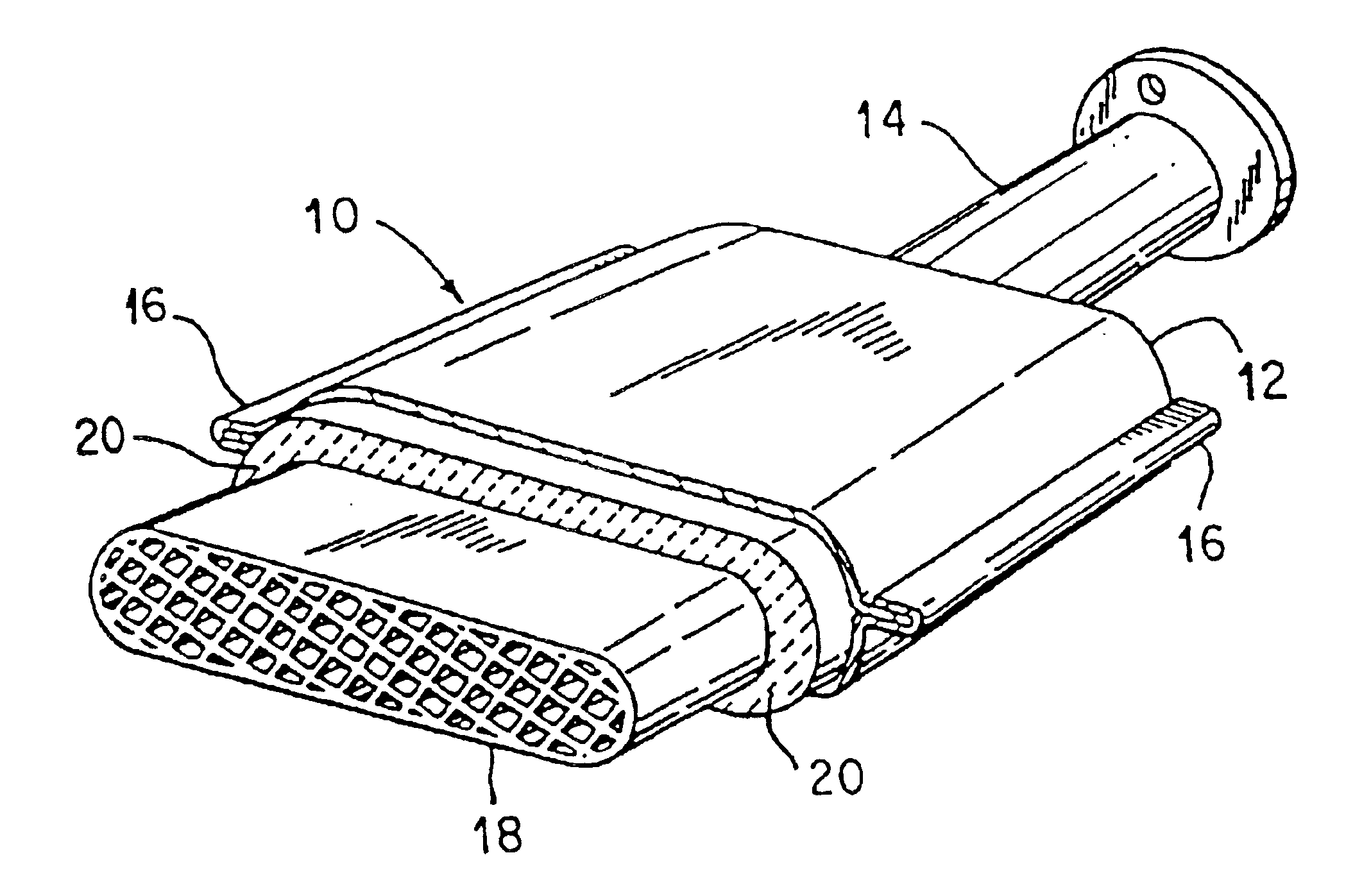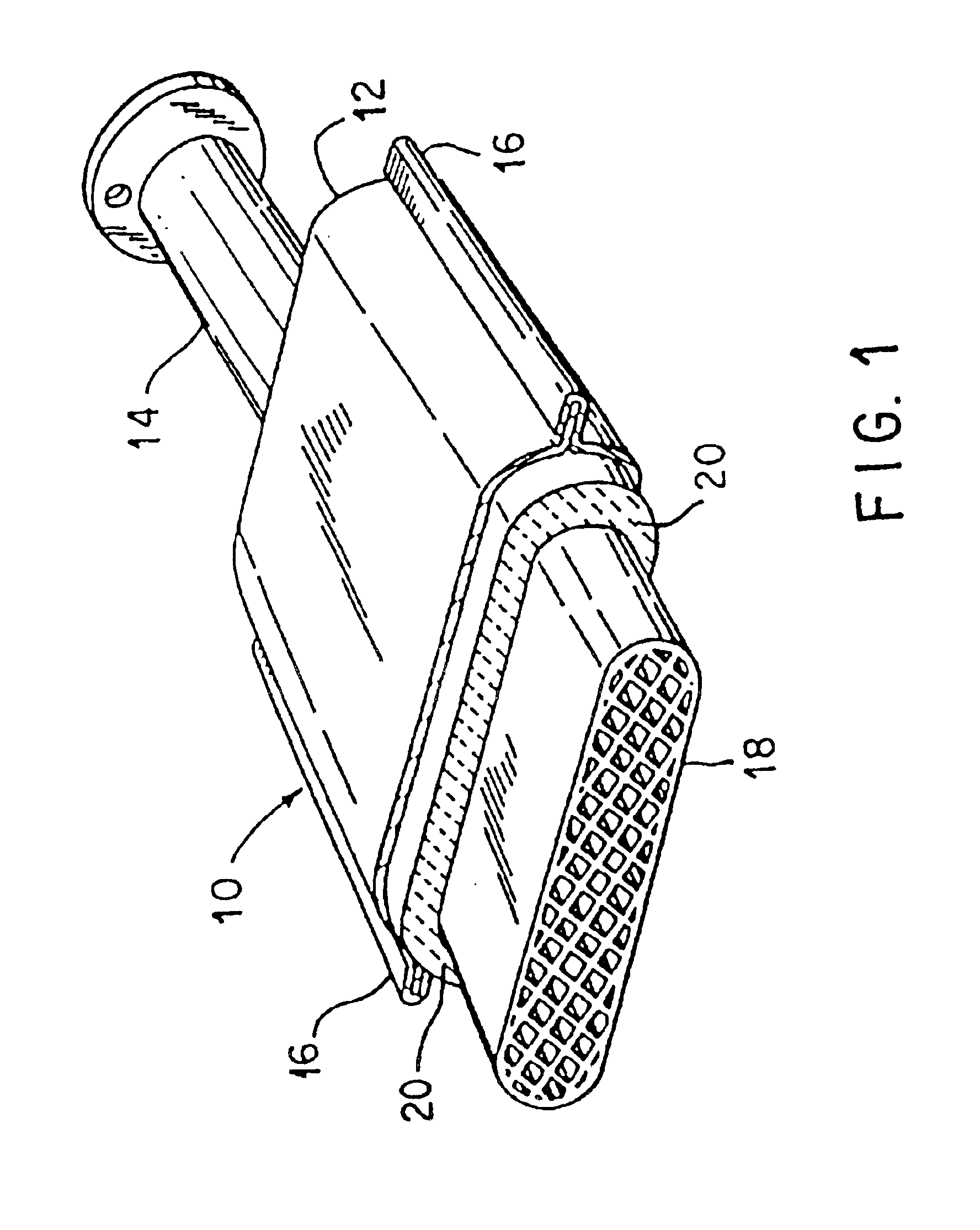Amorphous non-intumescent inorganic fiber mat for low temperature exhaust gas treatment device
a technology of inorganic fiber and low temperature, applied in the direction of filtration separation, physical/chemical process catalysts, separation processes, etc., can solve the problems of high frequency of failure of catalytic converters, monolithic structures can be so fragile, and structures can be very fragile, and achieve the effect of providing resistance to slippage of the supporting elemen
- Summary
- Abstract
- Description
- Claims
- Application Information
AI Technical Summary
Benefits of technology
Problems solved by technology
Method used
Image
Examples
example 2
Simulation of a TDI diesel converter was performed by cycle testing mats at 300° C. for 1000 cycles between a gap of about 3.0 to about 3.1 mm. The results are shown in FIG. 4. The samples were a 1550 g / m2 of a competitive dry layed, needle punched ceramic (about 50% alumina / 50% silica) fiber blanket, such as ULTRAFELT® manufactured by Thermal Ceramics, Augusta, Ga., (shown by an open diamond), and a 1600 g / m2 mat of the present invention prepared with a 50% alumina / 50% silica fiber with no binder (shown by a triangle); a silicone binder (shown by a solid square); and an acrylic binder that was not burned out prior to installation (shown by an solid circle).
The mat with the silicone binder comprised 92% of an amorphous fiber comprising 50% Al2O3 and about 50% SiO2 with a fiber index of 72% and 8% of a silicone latex binder (DOW CORNING #85 silicone latex from Dow Corning, Inc. Midland, Mich.). The resulting mat had a basis weight of 1600 g / m2 and was 7 mm thick. As shown in FIG. 4, ...
example 3
Testing in a Catalytic Converter
A 4.66″ diameter converter was assembled with comparative mats and tested in a hot shake test at 300° C. with an acceleration of 60 times gravity (60 g's). The converter with a traditional intumescent mat, consisting of approximately 55% unexpanded vermiculite, 37% ceramic fiber, and 8% acrylic latex binder, such as INTERAM® TYPE-100 and INTERAM® TYPE-200, lost its holding force and the fragile structure slipped within the shell in less than 50 hours.
A mat of the present invention, made with amorphous alumina / silica fiber and an acrylic latex binder which had been burned out prior to installation in the converter, was run in the hot shake test at 300° C. with an acceleration of 60 g and performed for 100 hours without failure. Upon inspection after testing, the fragile structure was found to be firmly mounted in the shell, with no relative axial movement. The mat was also found to be undamaged by gas erosion or other visible degradation.
A mat of the p...
PUM
| Property | Measurement | Unit |
|---|---|---|
| temperature | aaaaa | aaaaa |
| Young's Modulus | aaaaa | aaaaa |
| Young's Modulus | aaaaa | aaaaa |
Abstract
Description
Claims
Application Information
 Login to View More
Login to View More - R&D
- Intellectual Property
- Life Sciences
- Materials
- Tech Scout
- Unparalleled Data Quality
- Higher Quality Content
- 60% Fewer Hallucinations
Browse by: Latest US Patents, China's latest patents, Technical Efficacy Thesaurus, Application Domain, Technology Topic, Popular Technical Reports.
© 2025 PatSnap. All rights reserved.Legal|Privacy policy|Modern Slavery Act Transparency Statement|Sitemap|About US| Contact US: help@patsnap.com



